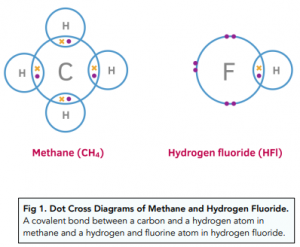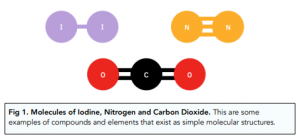1. [PDF] covalent bonding answer key - Playmada Games
COLLISIONS GAMES -- COVALENT BONDING ANSWER KEY. Level 1. Level 2. Level 3. Level 4. Page 2. Level 5. Level 6. Level 7. Level 8. Page 3. Level 9. Level 10.
2. Collisions IMF - Level 17 Solution - Rumble
17 jan 2021 · Solution to the Collisions IMF - Level 17.
Solution to the Collisions IMF - Level 17

3. [PDF] Covalent Bonding Quest - Playmada Games
Use your Collisions gameplay experience to gather the following intel from specific Covalent Bonding levels: 1. Label each atom of the molecule with the ...
4. Collisions Covalent Bonding - Level 14 solution
17 jan 2021 · Collisions Covalent Bonding - Level 14 solution. CaffeineChemist. 5 followers. Follow. 17 11. Comments. Share. Save. Embed. Comments. Share.
Collisions - Covalent Bonding - Level 14 solution

5. Covalent Bonding | CIE A Level Chemistry Revision Notes 2025
Reaction Kinetics · 8.1 Rate of Reaction · Rate of Reaction & Collision Theory ... 17. Carbonyl Compounds · 17.1 Aldehydes & Ketones ... Solution Banks. Members.
Revision notes on Covalent Bonding for the CIE A Level Chemistry syllabus, written by the Chemistry experts at Save My Exams.
6. Bonding - Covalent Bonds (A-Level Chemistry) - Study Mind
Each line represents a covalent bond. Another example of a compound with dative bonds you need to know about is Al2Cl6, which forms as a result of the formation ...
In this A-level / IB Chemistry Revision Guide, you will find high quality Covalent Bonds A-level Revision Notes and Past Paper Questions

7. Covalent Bonding | CIE AS Chemistry Revision Notes 2025
electrons are transferred but only shared in this type of bonding. Chemical Bonding Defining Covalent Bonds, downloadable AS & A Level Chemistry revision notes.
Revision notes on Covalent Bonding for the CIE AS Chemistry syllabus, written by the Chemistry experts at Save My Exams.
8. [PDF] Cambridge O Level Chemistry - Answers to the Student book
6 Particles from the coffee diffuse from the jar around the room as a result of collisions ... Does the substance in solution contain ionic or covalent bonding?
9. Student Check For Understanding COVALENT BONDING Collisions...
Student Check For Understanding COVALENT BONDING Collisions Concepts: Types Of Bonds, Bond Polarity,. 19+ Users Viewed. 3+ Downloaded Solutions. Melbourne, ...
Student Check For Understanding COVALENT BONDING Collisions Concepts: Types Of Bonds, Bond Polarity, And Molecular Shape Directions: Using Any Of The Following Atoms, Create 4unique Molecules And Draw Their Lewis Structure Below. 7N Molecule 1:...
10. Bonding - Properties of Covalent Structures (A-Level Chemistry)
Covalent compounds form as result of pairs of electrons being shared between non-metal atoms. Depending on the extent of covalent bonding in a compound, this ...
In this A-level / IB Chemistry Revision Guide, you will find high quality Properties of Covalent Structures A-level Revision Notes and Past Paper Questions

11. Collisions Atoms - Level 7 Solution
18 jan 2021 · Collisions IMF - Level 17 Solution. 2.13K · 10:18. CaffeineChemist. 3 years ago $14.96 earned. Collisions Covalent Bonding - Level 14 solution.
Solutions for Collisions - Atoms - Level 7

12. Gas Pressure and Particle Collisions (4.1.1) | CIE A-Level Chemistry Notes
Origin of Pressure: The pressure exerted by a gas is a direct result of the momentum transfer during the collision of gas particles with the container walls.
13. [PDF] Chemical Changes and Structure SCQF - SQA
The covalent bond is a result of two positive nuclei being held together by their ... J1YK 76 Chemical Changes and Structure (SCQF level 6) Unit Specification.
14. Pictures in the Mind - Chemical Bonding Concept/Skills Development
17. Some substances are molecular with low ... Basically, three types of intermolecular interactions-not including the strong covalent bonding within the ...
17. Some substances are molecular with low melting points, soft structure, and low solubility in water. What kind of bonding could account for these properties? [Student answers will vary. This is a very open-ended question; it's probable that students will not give complete answers without help from you. Basically, three types of intermolecular interactions-not including the strong covalent bonding within the molecules themselves-may be responsible. These interactions are collectively referred to as van der Walls forces. The weakest intermolecular forces are London forces, as seen in noble gases, carbon dioxide, and other non-polar, low-melting substances. These forces can be viewed-at least at a basic level-as due to motion of electrons and formation of temporary dipoles. The forces become stronger as the total number of electrons within molecules and the surface are of the molecules increase. For example, carbon dioxide melts at a considerably higher temperature than does molecular hydrogen.
15. [PDF] Chemistry Higher and Standard level - International Baccalaureate
the answer sheet provided. • A calculator is ... covalent character and bonding type in this compound ... 17 pages. Markscheme. Specimen paper. Chemistry. Higher ...
16. VIDEO solution: I have an online lab assignment on app.playmada.com ...
6 jun 2022 · I have an online lab assignment on app.playmada.com/collisions. I have reached level 17 of the covalent bonding exercise, but I can't figure ...
VIDEO ANSWER:
17. 11.1.1 Colors and Volatility of Group 17 Elements - TutorChase
Reason for Colour: The large size of iodine molecules affects the energy levels of electrons, leading to absorption of different light wavelengths. The result ...
18. DP Chemistry: Covalent bonding - InThinking
24 nov 2023 · ... level in both atoms then they will tend to ... The Nature of Science · Key terms & concepts · NOS ... 7 & 17. Equilibrium (1) · 7 & 17. Equilibrium ...
The IB uses Pauling’s scale of electronegativity. It was Linus Pauling who first proposed the idea that the bonding electrons pair between two different atoms is not shared equally. If the electrons are in the same outer electron energy level in both atoms then they will tend to be closer to the atom with the greater number of protons in the nucleus resulting in a polar bond. Similarly the closer the outer electron...
